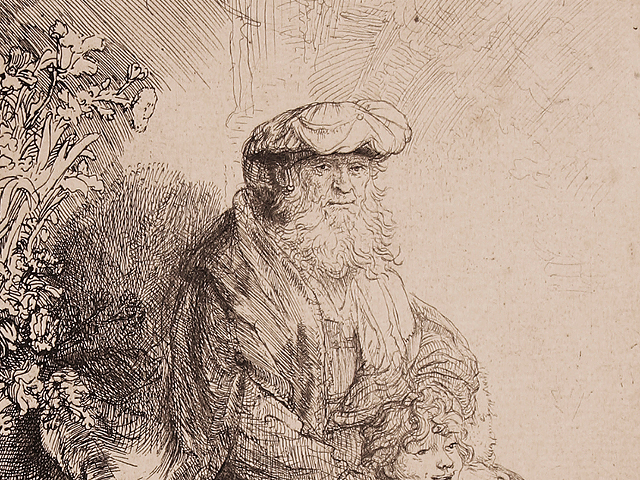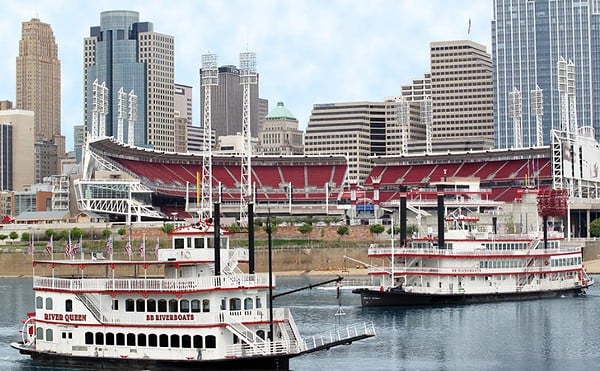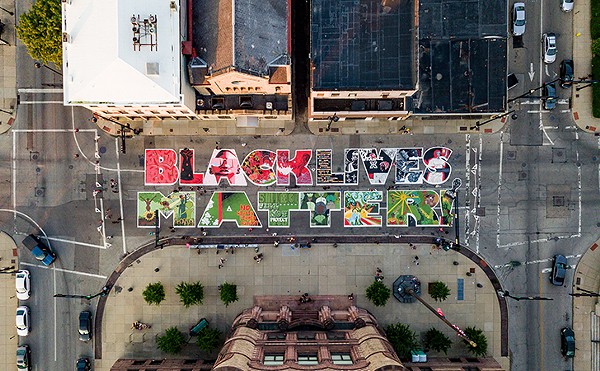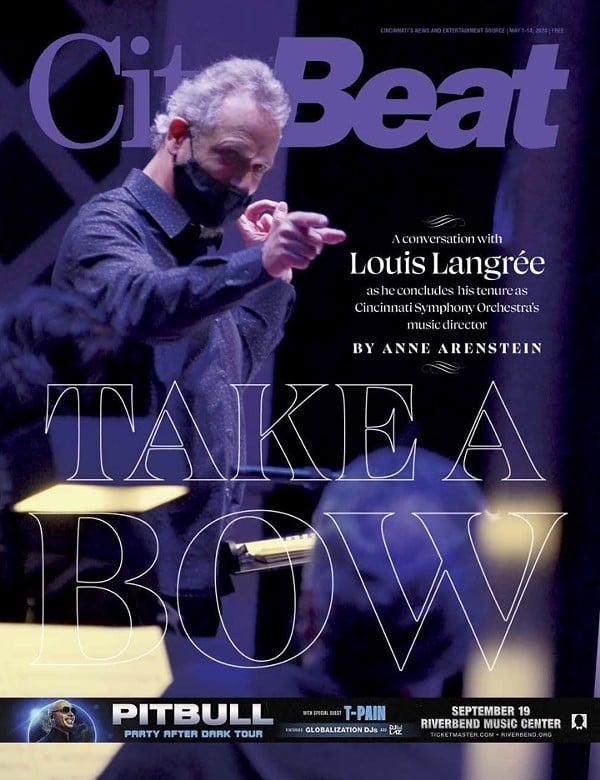
Right away the street-level exhibit The Wired blurs the line between actuality and artifice as it seeks to undo the dichotomy between the physical world and the digital realm. Curator C.M. Turner chose to build the show around an installation from Katie Parker, Guy Michael Davis and Jordan Tate titled “Façade.”
Mimicking an English garden, “Façade” is a pretense of pretentiousness. And the more you think about that premise, the more you start questioning everything, which is kind of the point ofThe Wired. A mazelike hedge stands before us, and entering is the equivalent of going down the rabbit hole (or signing on to the internet). We are able to walk about this green space, yet at the same time it’s all an illusion. The water flowing into the ceramic urn is real, but the ivy is a downloaded image printed on fabric. The Greek goddess statue is a plastic cutout; her pedestal is a shipping box.
If the ivy isn’t real, then that mound of grass on the floor is also fake, right? “A Line Made by Growing,” from Casey James Wilson and Georgia-based Justin Hodges (the only non-local artist in the exhibition), upends our thinking again.
The pair’s installation subverts the common experience of viewing the digital documentation of an artwork rather than the original, physical piece — in this case Richard Long’s “A Line Made by Walking.” The Englishman created Land Art in 1967 by repeatedly trampling over a field. He then documented his act with a photo. In placing a strip of natural grass under a print of Long’s image, Wilson and Hodges — whose own collaboration depends on online communication rather than in-person interaction — reclaim some of the physical from the digital world.
The physical and digital merge again in a virtual reality experience from Ian Anderson and Caroline Turner. At the Weston, visitors don goggles to visit a server farm, an overlooked but real place that stores all the bits of info we mindlessly upload to an imaginary cloud. While the virtual reality headset is wrapped around you, wrap your head around that.
Multiple avenues of communication crisscross in The Wired. But downstairs, retired University of Cincinnati photography professor Jane Alden Stevens uses only stark black-and-white pictures of telephone wires and a few short questions and answers to deliver her message. The Thread in the River posits that even in the internet age, there is a need for an old-fashioned means of sharing and documenting. In an effort to know family members and herself better, Stevens posed questions such as, “How many places do you feel at home?” and “How many people do you wish you had never met?” Each answer is limited to a number, which she’s written above a telephone line along with the respondent’s relationship and age. The lack of additional information only adds to the photos’ universal and timeless appeal.
Upstairs, The Wired represents a new wave of Cincinnati artists bringing virtual reality and other digital technology to the fore. All are under 40 years old, including curator Turner, and all have ties to UC. Yet, as members of the show observed during a gallery talk, their generation’s work rests upon their mentor and former colleague Stevens and another pillar of the city’s arts community — Kate Kern, who rounds out the Weston’s trio of exhibits.
Kern’s Calling explores the seen and unseen through drawings referencing the biological world, religion and domestic life. She then lets go of all that’s familiar, sending the icons floating through darkness in an immersive, dreamlike animation that perfectly complements both The Wired’s concepts and Stevens’ more traditional exploration of identity.
Could a deeper reality exist? Kern suggests that first we have to believe it to see it.
Exhibits THE WIRED, THE THREAD IN THE RIVER and CALLING are on display at the Weston Gallery of Art through April 2. Gallery talk with Kate Kern 7 p.m. March 15. More info: westonartgallery.com.





